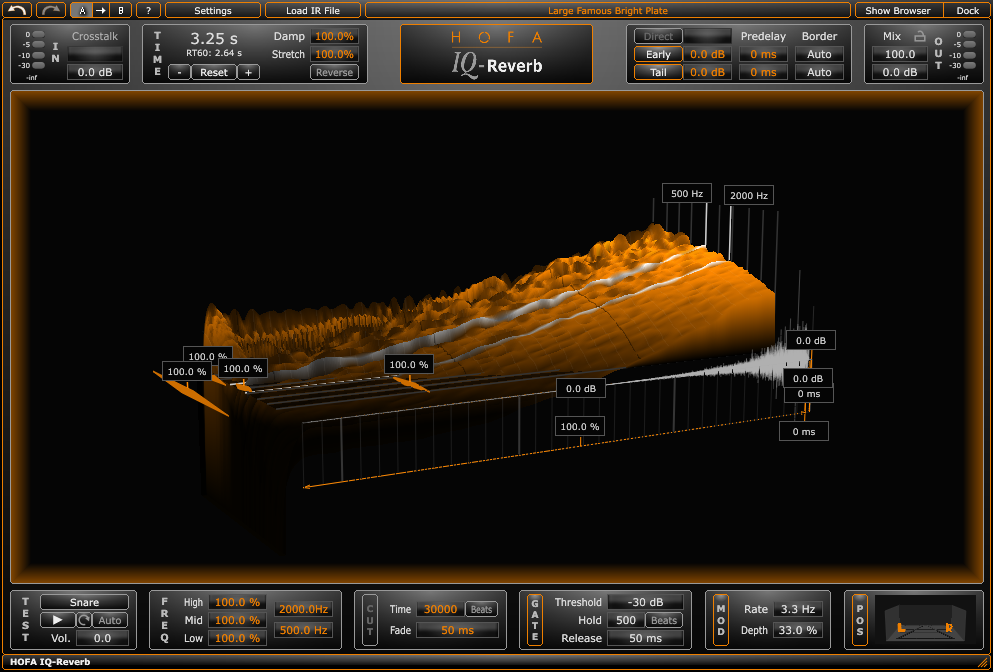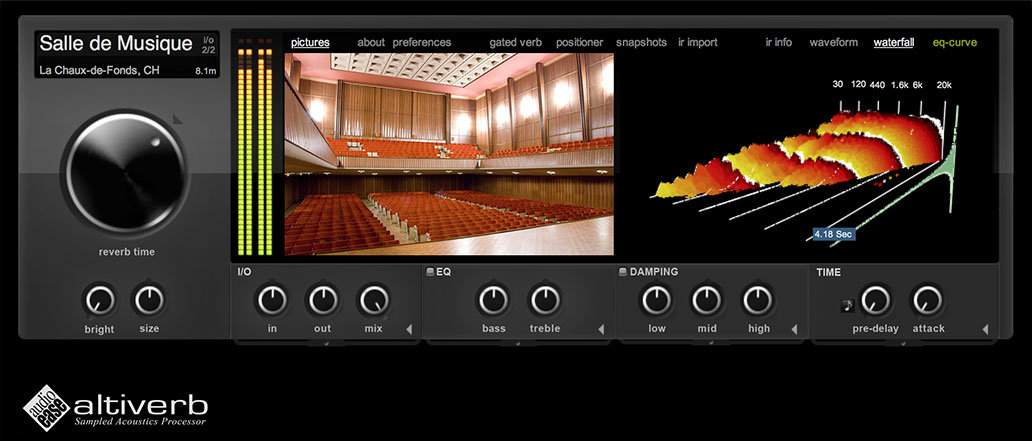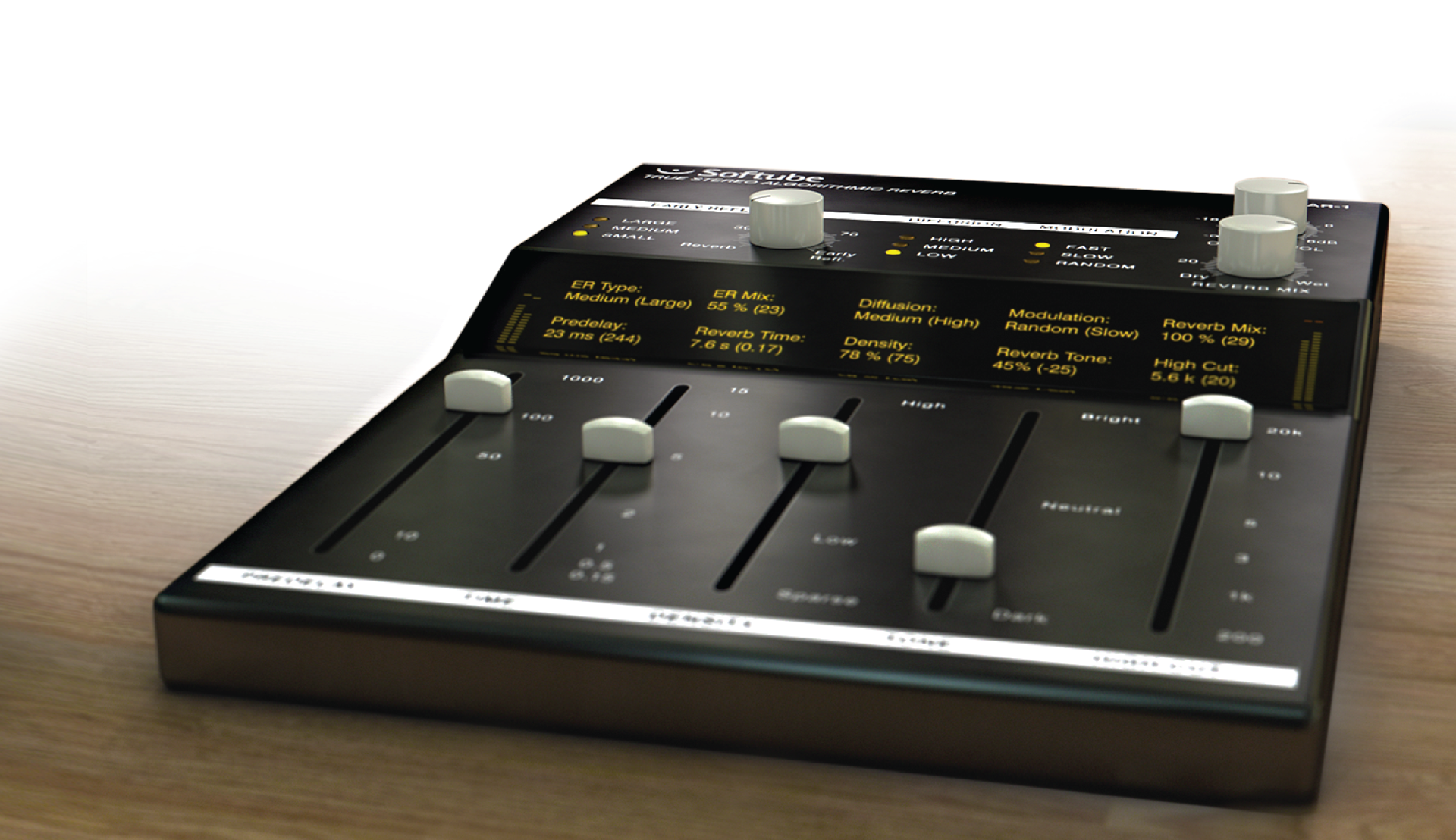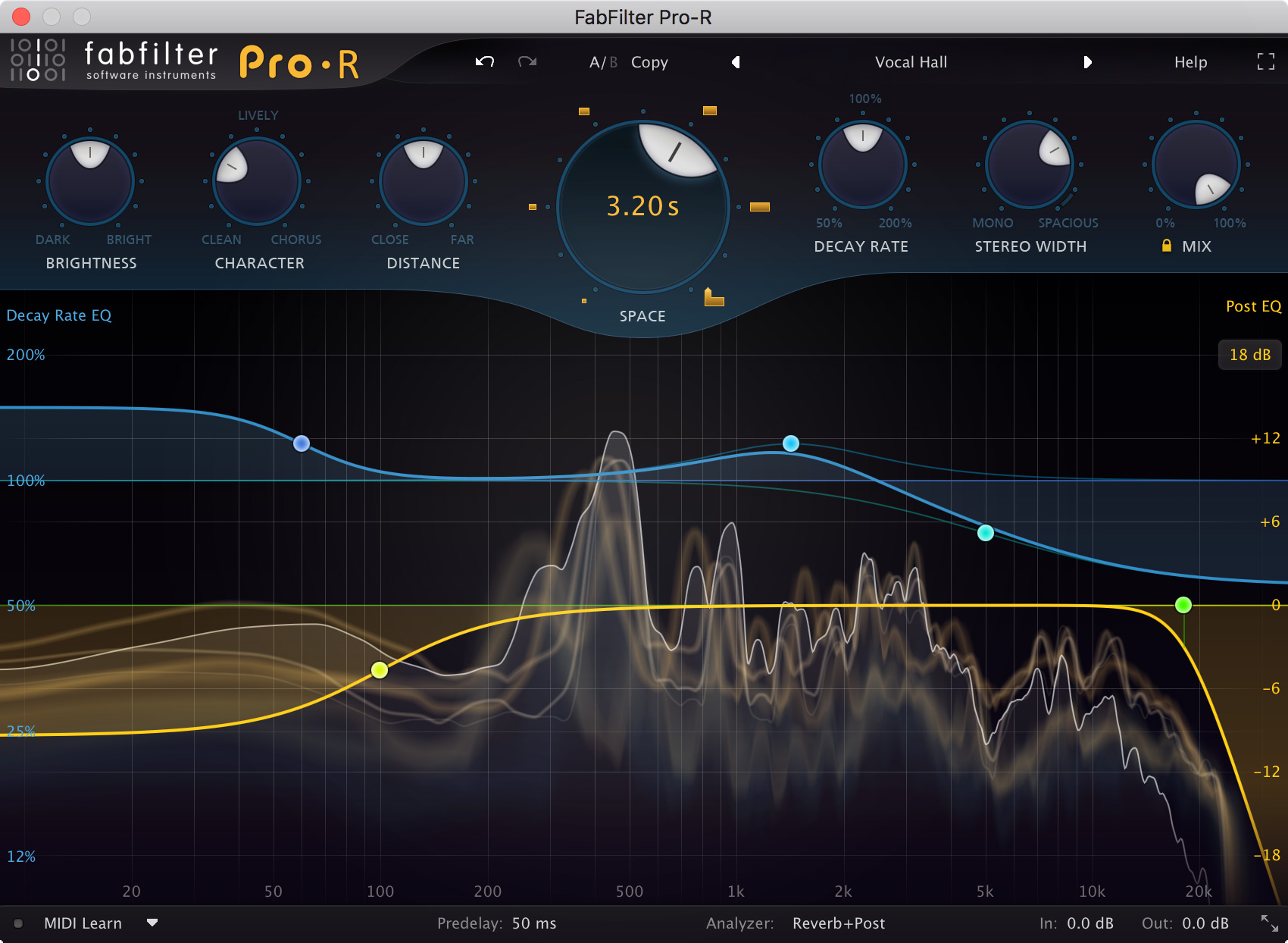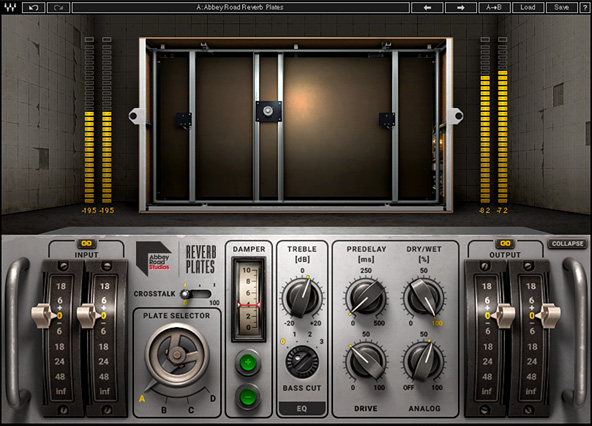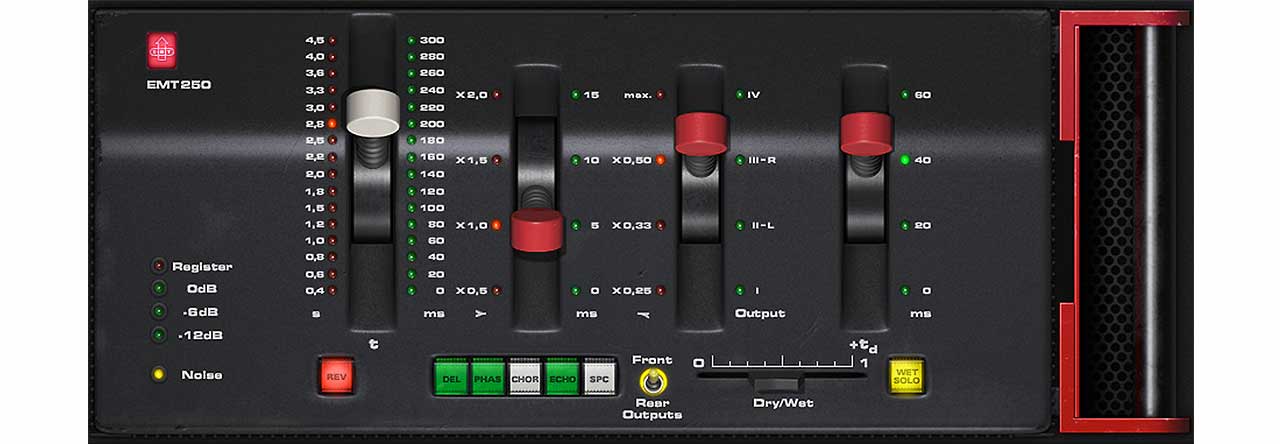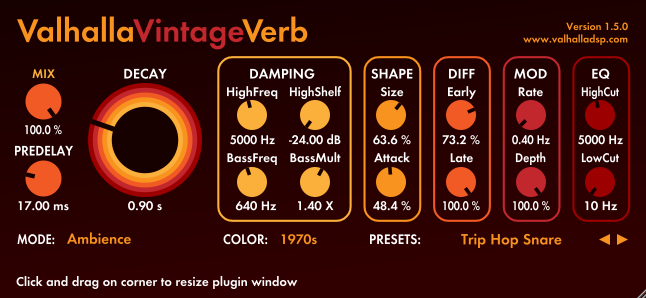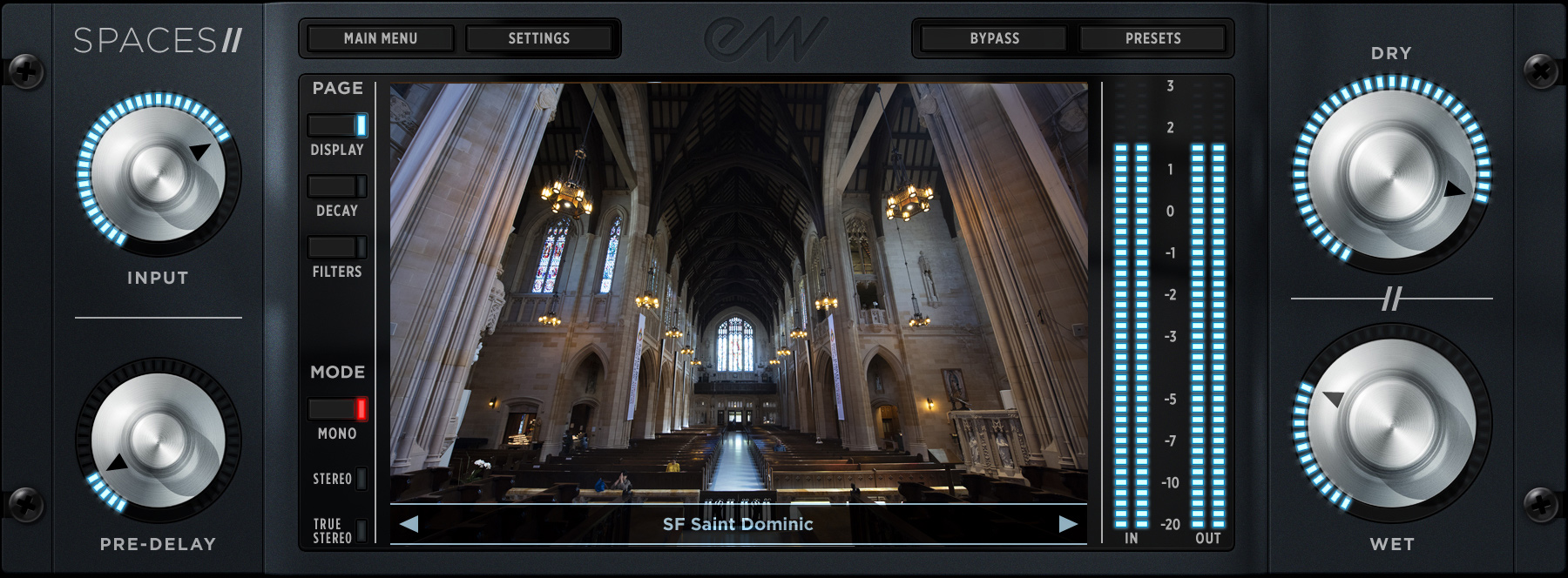The 10 Best All-Around Reverb Plugins on the Market
Reverb is one of the three most essential tools for an audio professional. Along with EQ and compression, a little dose of the right reverb can transform a dull source into something with life. You can go crazy, creating an infinite soundscape to help round out a pad, or go gentle, dialing in a subtle bit of intrigue for an intimate vocal.
No matter what your use case, this list compares some of the best reverb plugins. Spanning the list are algorithmic and convolution offerings at a variety of price points and for a variety of different jobs. Some are old favorites while others are newcomers to the audio scene.
My goal was to find the best reverbs around despite age, price or complexity. I searched for the best sound, value and usability, settling on nine plugins that deserve a spot in your DAW.
As with my roundups for the best tape saturation and delay plugins, there’s an audio demo to accompany each plugin that you’ll find at the end of this post. Please note that while these reverbs can achieve a great array of effects, I went for a basic room reverb (or equivalent) on a drum loop, keeping the mix as close to 30 percent as possible.
Before we dive into the plugins, let me run over how I went about choosing the candidates for this list.
Choosing the Best Reverb Plugins for Everyday Use
There are a lot of reverb plugins on the market—some may argue too many. That makes breaking down a list of the “best” tricky to do, and inevitably I’ll end up including someone’s favorite plugin at the omission of someone else’s. If we’ve left one of your favorites off this list, as always, let us know about it in the comments below!
The first and most important criteria for this particular list is that the reverb be adaptable. It doesn’t matter what a particular reverb is trying to accomplish as long as it gives you the tools to go in a different direction. Eventide’s Blackhole, for example, is a fantastic plugin for creating massive soundscapes, but didn’t make it to this list as a simple room sound is often better achieved by an alternate tool.
A couple of plugins may seem like an exception to this rule at first glance (such as the Waves Abbey Road Plates and UAD EMT 140 which provide a single style of emulation). But the unifying factor here is that these are kinds of reverbs that you could pull up and give a try on ANY mix, and help form the backbone of any ambience you may add to a track.
I’ve heard concerns on previous roundups that some of the plugins are too expensive and that budget options weren’t available. Though I did factor in price as it relates to value and have made notes about it below, I did not include any free plugins in this roundup, as they tend to have a narrow focus and don’t pass the first criteria. (For free options, try our Big List of Free Pro Tools Plugins.)
Lastly, I considered the overall usability of the plugin. Some reverbs require you to get down deep into the trenches and, while that’s okay so long as the payoff is big enough, I looked at how likely one would be to use the plugin day in and day out.
Here they are, my top 10 picks, in no particular order:
HOFA IQ-Series Reverb
The HOFA IQ-Series Reverb is among the best convolution units on the market.
It comes packed with a massive list of impulse responses to choose from, organized by number of channels and ideal instrument usage.
You can even audition the impulses with a variety of different samples in the “Test” section at the bottom of the GUI.
The (literal) centerpiece of this plugin is its 3D display. Here, you can interact directly with the reverb, adjusting early reflections, dampening, frequency response and more. Other convolution plugins have these same controls, but none feel quite as intuitive as the IQ-Series Reverb.
This feature takes what should seem like complex adjustments and presents them in a way that’s easy to visualize. Newbies can “see” how the reverb is affecting the source, and veterans can even more quickly dial in the tone they want.
Outside of usability, the impulses provided just sound great. Presets like “huge church choir” sound as massive as the name implies. Between the abundance of impulses and the ability to morph each of them even further, IQ-Reverb can adapt to any situation.
It’s pretty cheap, too—at least considering how often you’re likely to use it. For under $200, this reverb is a go-to choice and should almost certainly be among the tools inside your DAW if you’re not covered in this department already.
Audio Ease Altiverb 7
As another option, Altiverb 7 could easily replace IQ-Reverb in your toolkit.
Both plugins come with their own strengths but share a common theme: Excellent audio quality and incredible adaptability.
With Altiverb, you tradeoff IQ-Reverb’s beefy interface for a streamlined convolution reverb that comes with an even greater list of IRs.
A huge and general array of concert halls, studios, churches and clubs make an appearance—many of them famous spaces. But Audio Ease also includes some unique impulses for post-production and unusual creative effects. You could set up a “When the Levee Breaks”-style drum tone using an impulse response of a flight of stairs, or recreate the footsteps of a prisoner with the Alcatraz impulse. Even if you won’t use an impulse of a 30-foot oil tank, it’s nice to know the option is there to mess around with.
The great number and overall quality of the impulses is what makes Altiverb pull ahead of other convolution reverb options. It’s useful for any type of audio work, no matter if you want that choir to sound like they are belting away in Notre Dame, or if you want that voiceover to sound like it’s coming from the next room.
For routine music production tasks, IQ-Reverb is a great tool. Altiverb, on the other hand, is a more versatile toolbox that will perform on a wider range of audio jobs.
Softube TSAR-1
Softube’s TSAR-1 takes a different approach to reverb design.
Instead of providing countless impulse responses or emulating a bygone unit, it’s a completely new algorithm that sounds as great as it looks.
It’s a toolbox of a reverb that isn’t bogged down by a massive list of impulses or controls.
This plugin’s UI is made up of five sliders, three knobs and three switches. The knobs control utility functions like reverb mix, output volume and the amount of early reflections. The switches handle how your early reflections are simulated, the amount of diffusion and the level of modulation.
The majority of control, however, comes from the sliders. Here, you have sliders for pre-delay, time, density, tone and high cut. Although the names are simple and familiar, the full flexibility of these controls isn’t apparent at first. Don’t let the interface fool you, this is a powerful plugin that create almost any style of reverb you could want.
TSAR-1 doesn’t come with an abundance of impulses or controls, but Softube proves you don’t need them. This a fantastic sounding reverb that can emulate vintage and modern tones, all while managing an accessible GUI. For those looking for a minimalist approach without compromising sound or flexibility, the TSAR-1 does not disappoint.
FabFilter Pro-R
As a longtime fan of FabFilter plugins, I was the first in line when Pro-R hit the scene.
Unsurprisingly, the plugin comes with all the flexibility and goodies you’d expect from a FabFilter product, and an attractive GUI that is easily usable for newbies and vets alike.
Pro-R isn’t just a pretty face and a lot of options, though. Its algorithm can more accurately recreate decay in a room using the Decay Rate EQ.
On conventional reverbs, you’ll often have low/high filter adjustments to simulate room decay, with the high frequencies falling off quickly and the lows sticking around for a while. Decay Rate EQ does something similar, but with six independent EQ bands. You can freely shape the sound of your reverb to decay in a way that fits your mix.
For instance, maybe there’s too much build-up in the upper-mids, so you just scoop out that frequency so the reverb doesn’t build there while decaying. I used the EQ to create a dark, meaty drum room as you can hear in my example.
A fairly uncommon feature, the Decay Rate EQ sits above the normal EQ. You can use the bottom EQ to shape the overall sound of your reverb return, whereas Decay Rate EQ deals more with how the source material propagates in the virtual room.
UAD EMT 140
The German company EMT created the first plate reverberation unit in 1957. This simulation quickly caught on and became part of the iconic studio sound of the 50s and 60s, quickly earning a spot in The Plant Studios, famous for recording Prince, Fleetwood Mac and Stevie Wonder.
Universal Audio modeled three of that studio’s original EMT 140 units to create this massively accurate plate reverb plugin. Plates A and B use the original EMT electronics system, and plates that had intentionally not been tuned in years for a more “vintage” tone, whereas plate C emulates a plate that was refurbished with new Martech electronics and was fully serviced and tuned before emulation. That gives you two unique vintage tones as well as a modern update to play around with.
As this is a plugin, you have more flexibility over the sound than the original unit including controls over the width of the reverb, as well as modulation parameters. While you don’t need these options to achieve a great sound, the flexibility is there to craft the reverb to your taste.
As always, UAD plugins come with the caveat of requiring a DSP accelerator. If you have a UAD system already, this plugin should definitely be among your tools. It’s fantastic-sounding, and these vintage-style plates work wonders on any number of sources.
Waves Abbey Road Plates
For those without a Universal Audio DSP system, Waves’ Abbey Road Plates fills the void.
This Waves plugin recreates the iconic sound of four plates from Abbey Road Studios, going as far as to model the walls inside of Abbey Road Studios.
Just as with the UAD EMT reverb, each plate has a unique sound to it. The A plate brings a lush, open reverb that carries nuance in a vocal throughout the reverb, whereas the B plate is darker, seeming to bunch up at the low frequencies as a source is put through it. The D plate is special in that it has a tube output, just as the original, so you can drive some distortion into it.
One of the best aspects of Abbey Road Plates, to me, is how generous you can be with the reverb. In solo, the sound seems to encompass a large area of the frequency spectrum, but the reverb becomes like butter once the track comes together. It melts into the other instruments without losing the depth you heard in solo.
Even better, the plugin is cheap—so long as you find it on sale. You can often snag it for around $50, which is a steal considering how much mileage you’ll get. It can be used on anything, but I normally gravitate towards it for vocals, even over more expensive reverbs I own.
UAD EMT 250
EMT was no stranger to innovation. Their EMT 250 was the first-ever commercially available digital reverb system, and still one of the most sought-after. It would go on to inspire companies like Lexicon and AMS to create their own iconic units.
Unlike other reverbs on this list, the 250 sounds undeniably digital. It’s a very scooped and clearly emulated response of how a reverb should sound. That’s in solo, however. Once it’s put into the context of a mix, it’s very clear why the 250 is as iconic as it is. The reverb blends with other sources seamlessly, creating dimension without overloading the frequency spectrum.
This tool is more than just a reverb, too. The 250 has a phaser and a grungy chorus built-in that both sound as unique as the reverb does. The phaser is handled manually using the white lever of the unit, giving you tactile control over how it reacts.
If you want the sound used on Purple Rain and Stadium Arcadium, then the UAD EMT 250 is for you. It’s probably the only choice considering only 250 physical units were ever made which retailed at a whopping $20,000 back in 1976! Universal Audio has managed to recreate the unit for the masses and, if the rest of the plugins weren’t already enticing enough to make one want to invest in a system, this one alone might do it.
PSP Nexcellence
Continuing on the theme of useful vintage recreations, there’s PSP’s Nexcellence.
It’s a spring emulation, modeled after “necklace-type” units. These classic reverbs held the springs in a dangling, necklace-like fashion that could bang against the side of the metal box and create a slightly jarring effect.
PSP embraces that sound, as you can hear a subtle example of in my test file. Each spring separates itself out, allowing the nuances of the spring reverberation to come through. You can go wild with the plugin to create grungy, demented sounds or craft a lush, clean reverb.
It’s not all about crazy spring reverb though. PSP has engineered the plugin to provide modern flexibility, allowing you to clean up the sound for a more natural approach.
While Nexcellence can get that job done, it sounds best when you try something unique. It recreates the vibe of a saturated, vintage reverb excellently, and it’d be a shame not to show that off.
Valhalla DSP VintageVerb
Valhalla makes it easy to forget about the glitz and glamour of other plugins and focus on the sound.
This no-frills reverb doesn’t mimic the look of a vintage unit or come with sprawling 3D display, but instead focuses on sound alone, modeling three distinct eras of reverb.
There are 17 reverb algorithms here, each with three modes of “color.” It’s this latter function that earns the plugin the name of “Vintage Verb”, allowing you to model sounds from the 70s and 80s, or use a full-bandwidth “modern” mode.
The 70s color recreates the sound of reduced bandwidth, with a 10 kHz maximum frequency output. It’ll create the artifacts of running at a lower sampling rate as you can hear in my audio demo. The 80s are full bandwidth, creating a brighter reverb, overall. You still have some artifacting, but these should sound different from 70s color.
The best part about this plugin, though, is that it’s cheap. For $50, there probably isn’t a better value on the reverb market. I reach for this plugin more than the price should justify, which is a testament considering the prices of other plugins on this list.
EastWest Spaces II
Rounding out this list of the best reverb plugins is another convolution behemoth, this one from EastWest. Spaces II aims to recreate iconic sound of scoring stages, churches and studios with pristine quality.
It’s not quite on the same level as IQ-Reverb or Altiverb 7 as its more of a small curated collection of spaces and isn’t a toolbox that you can throw on any source. This is a plugin that was designed to sound its best when paired with sections of instruments, be it a percussion group or a choir.
Spaces is a natural and ideal partner to the rest of EastWest’s lineup, and it is laid out in a way that makes it a perfect tool for bringing virtual instruments to life, by introducing them into beautiful spaces that have been painstakingly captured. If you’re into programming virtual instruments, then Spaces might well become your go-to reverb.
It can be used elsewhere, of course. I often use it for gated reverb on snares, for example, which requires a little creativity. Spaces is a great reverb, but specifically tailored for virtual instruments or ensemble uses.
Final Thoughts
Reverb is a critical element of so many audio jobs, whether you’re using it for adding some depth to a multitrack recording or bringing dialogue to life in a believable space. No matter what the use, I hope you’ve found a reverb here that can help you in your audio journey.
If you’re starting from scratch, I recommend FabFilter Pro-R, HOFA IQ-Series Reverb or Audio Ease Altiverb 7 as a great starting point. All have an incredible amount of depth and complexity to adapt to a variety of situations, with fantastic sound, to boot.
Using your DAWs built-in reverb should give you the basics but, unlike with a parametric EQ, upgrading to a third party solution is almost always worth it. There’s nothing worse than a cheesy reverb sound. While you can get great results with stock plugins, it’s much easier to get them with one of the options here.
Make sure to let us know about your favorite reverb in the comments below and, as always, thanks for reading.
To hear these plugins in action for yourself, listen below or click here.
Jacob Roach is a writer, producer, and engineer from St. Louis, Missouri.
Please note: When you buy products through links on this page, we may earn an affiliate commission.







